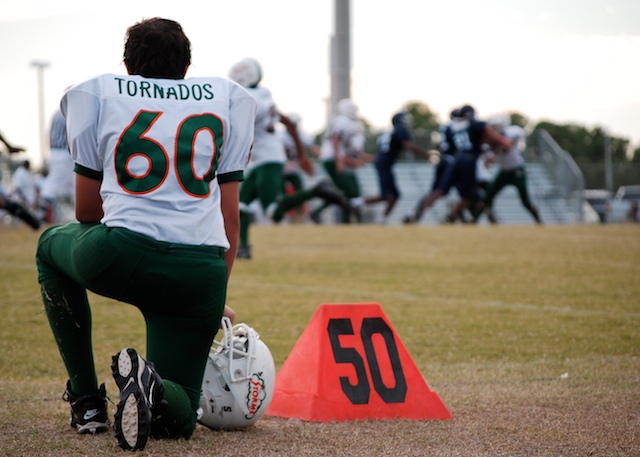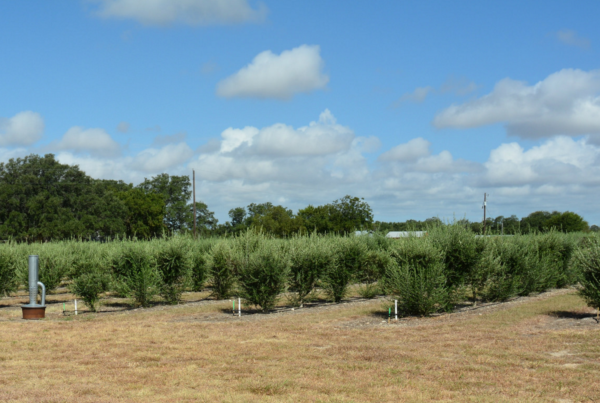San Francisco 49ers quarterback Colin Kaepernick said that by taking a knee during “The Star-Spangled Banner,” he’s protesting racial injustice and police brutality. The idea was to spark a national conversation about these issues.
Other players have joined Kaepernick, not just in San Francisco and not just in the NFL. Athletes across the country, competing at different levels, are taking a knee – including high school football players in Texas. School administrators are grappling with how to deal with it. What lesson does it teach to ban this form of protest?
Shelby Webb, reporter for the Houston Chronicle, says in Beaumont, all the players and coaches of a youth football team called the Beaumont Bulldogs have knelt during the past few games. In Pearland, a fifth-grader refused to stand for the pledge. Her mom, when contacted by the school, gave her permission for her daughter to sit out the Pledge of Allegiance.
A coach in Crosby ISD, Webb says, took a pre-emptive step, telling his players that if they kneeled during the anthem, they wouldn’t be able to play. This restriction spurred conversations in the locker room about showing solidarity.
“That made some players upset,” she says. “They had a long discussion over everything from respecting veterans to Black Lives Matter … ultimately the team decided to kneel for the coin toss, rather than for the national anthem.”
Because football is an extracurricular activity, the Supreme Court precedent that protects students’ rights to sit out the Pledge of Allegiance doesn’t necessarily apply. Texas law mandates students must recite the pledge, unless they have written permission from their parent to opt out. Webb says an education law professor she interviewed isn’t sure that law is constitutional.
“If someone challenged it, he’s not sure the Texas statute would stand,” she says.
Students who might be benched for kneeling don’t have much official recourse, Webb says, other than filing a complaint with their district and possibly contacting the local ACLU.
“Football is an extracurricular activity,” she says. “If you’re in the classroom, it’s much different.”
Post by Hannah McBride.
















